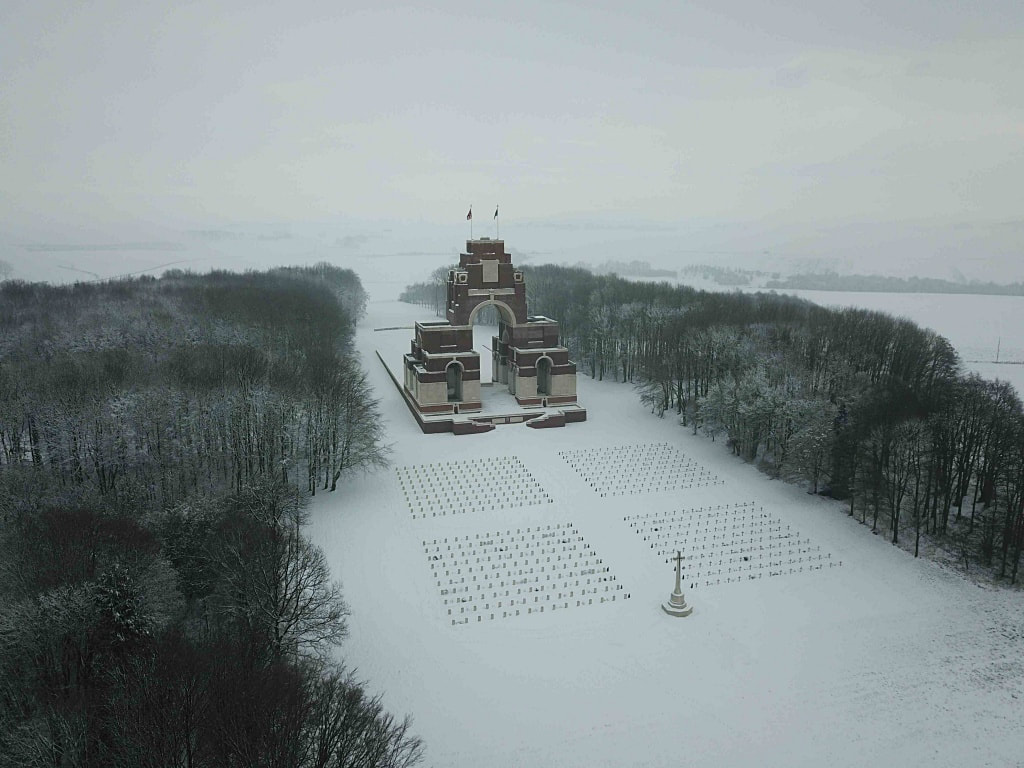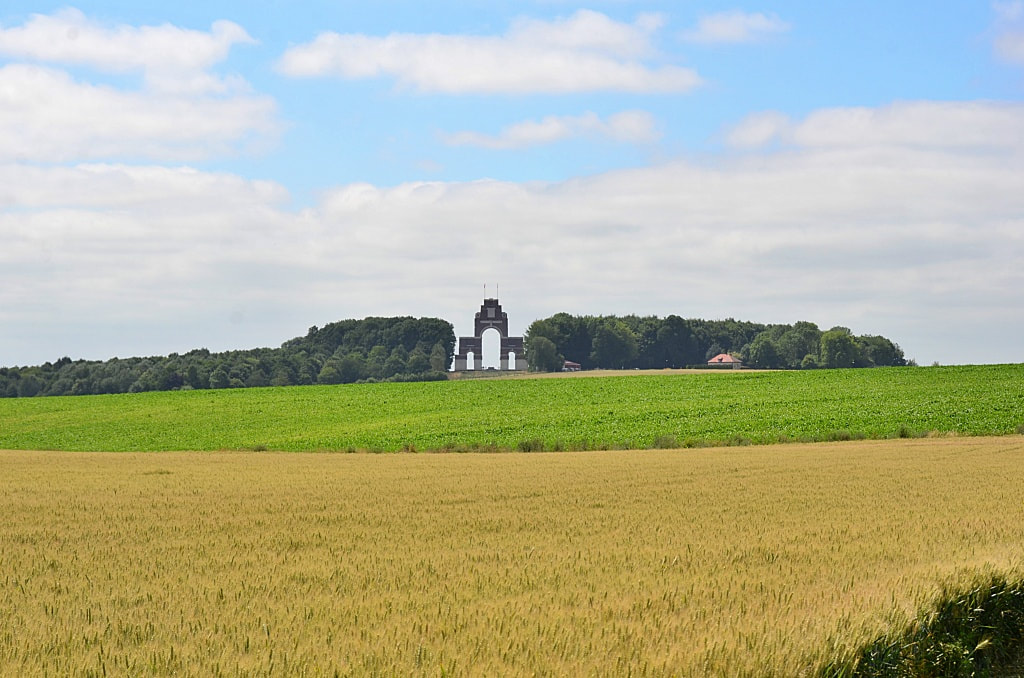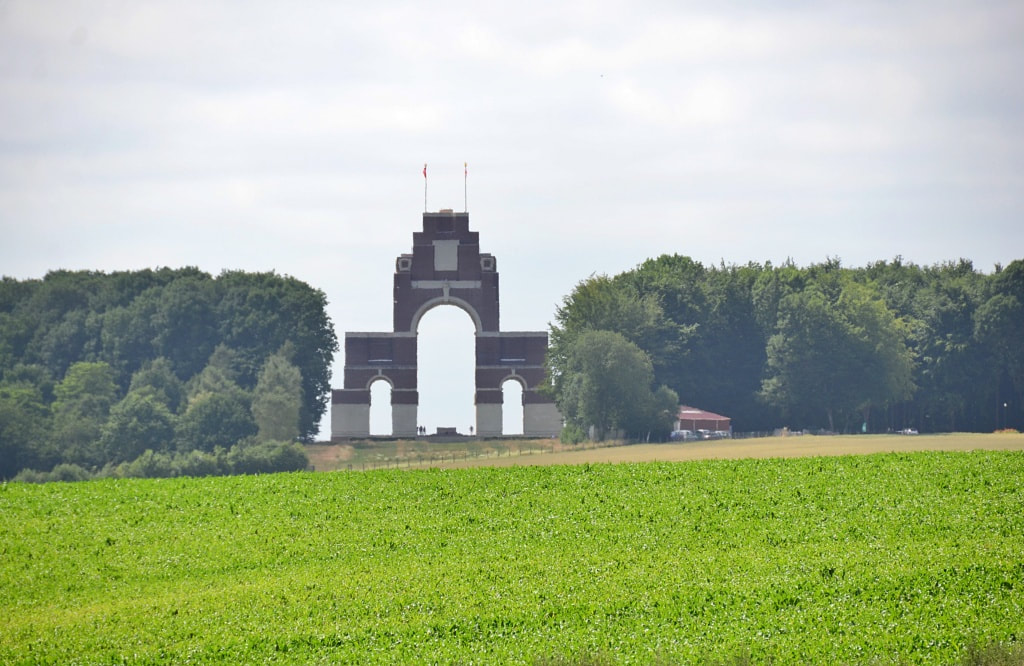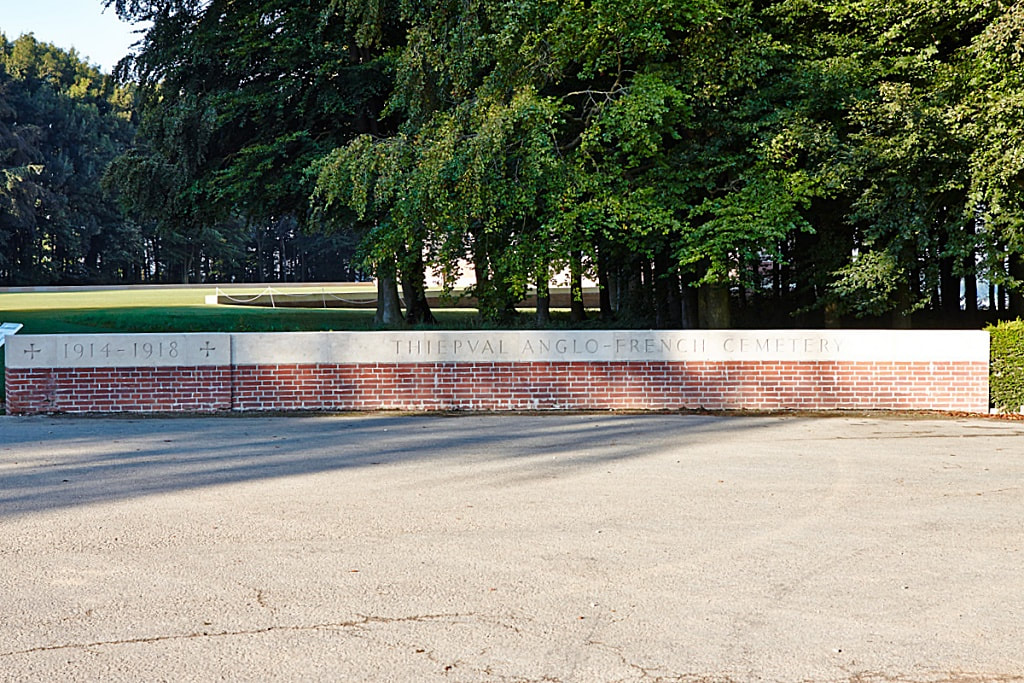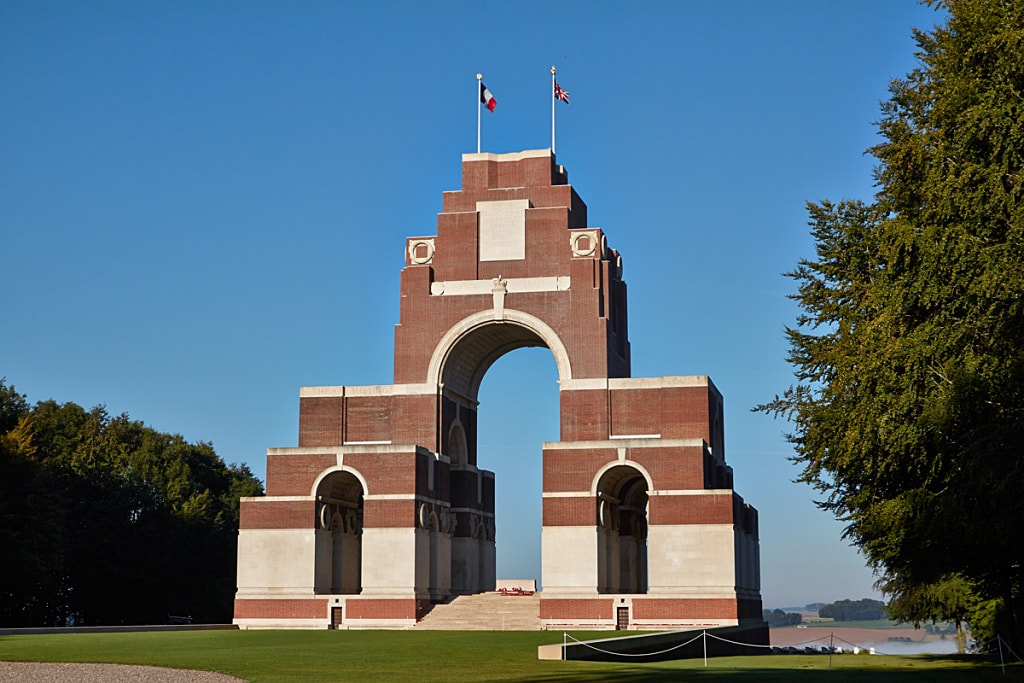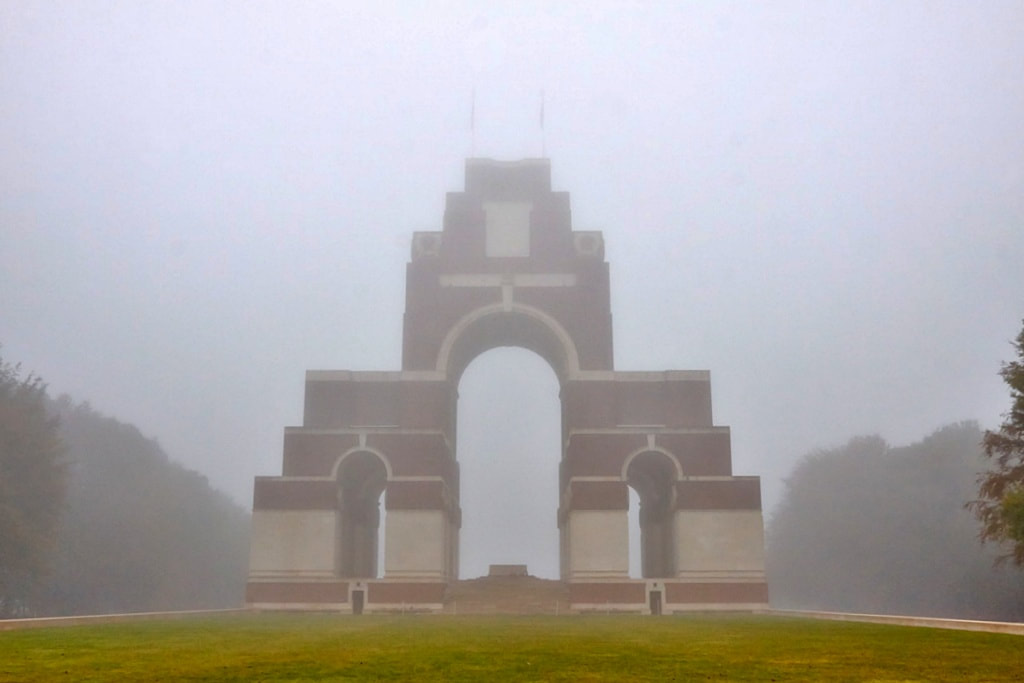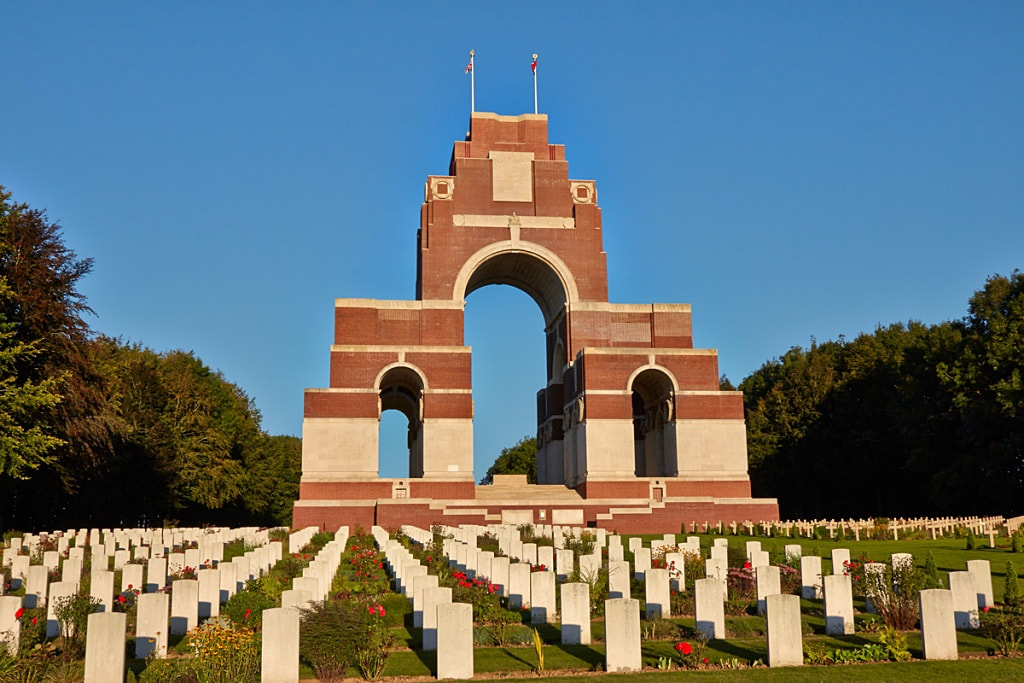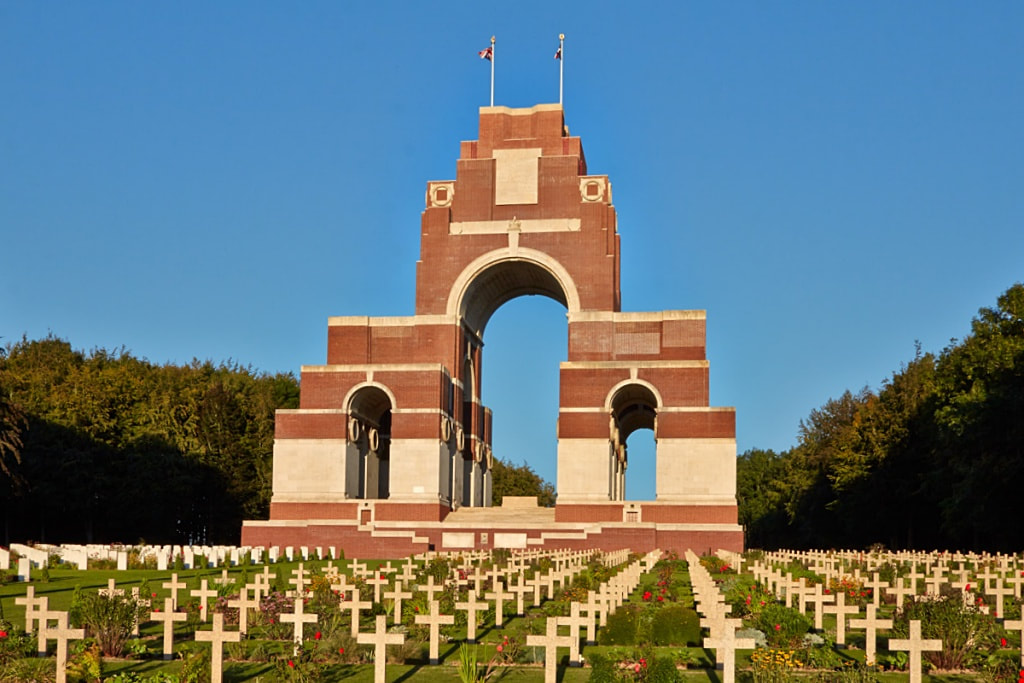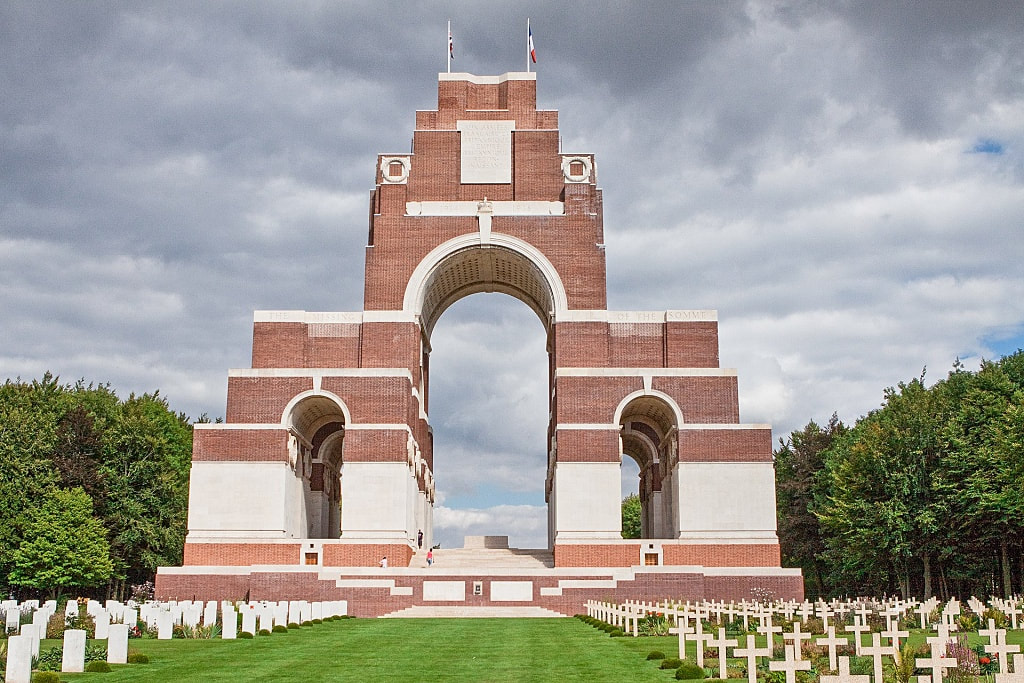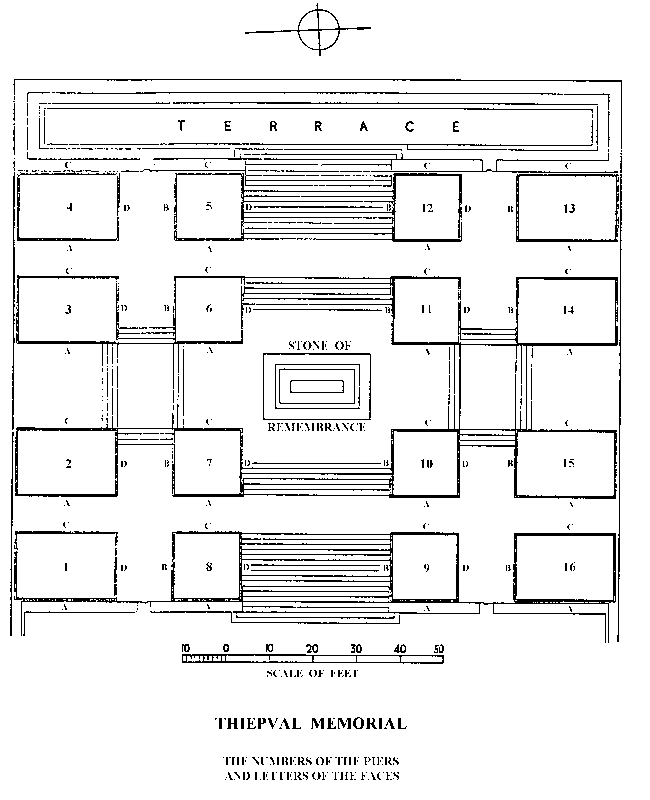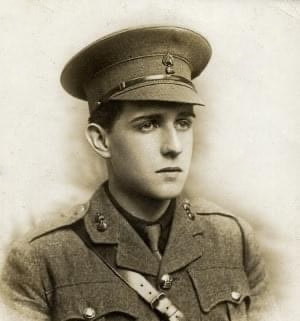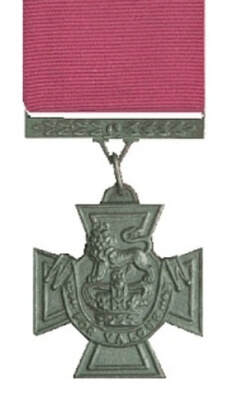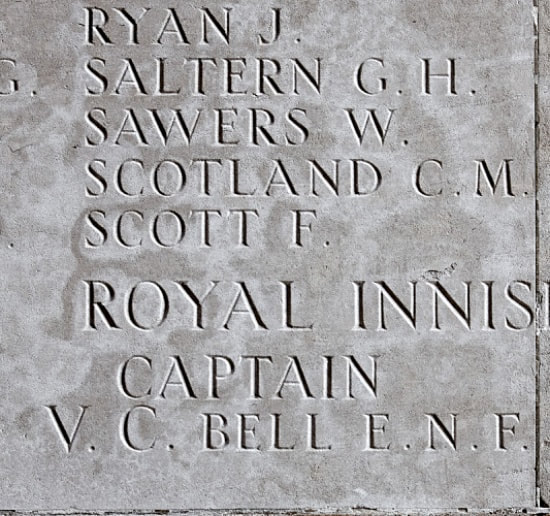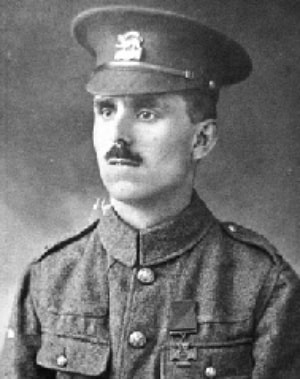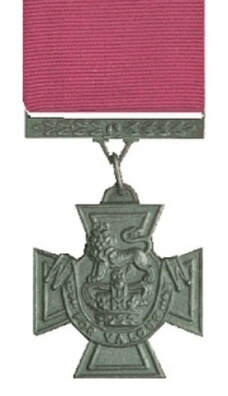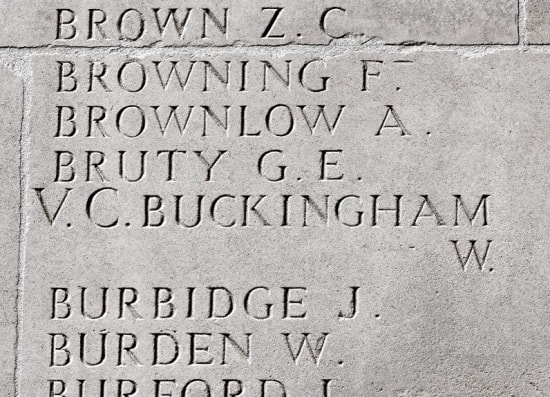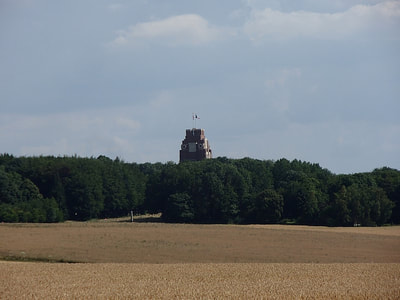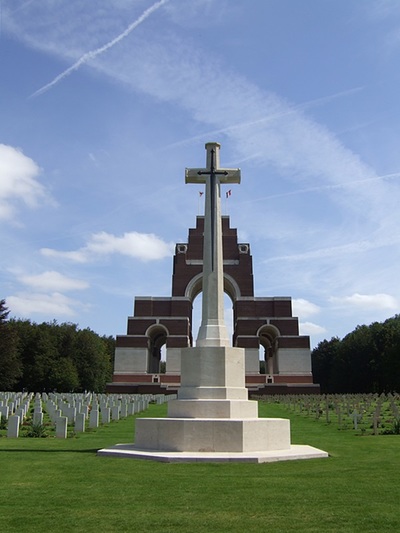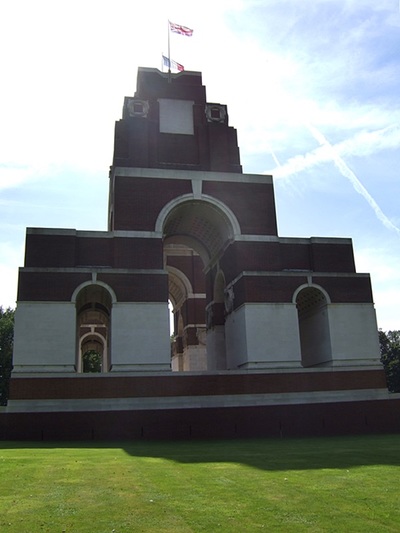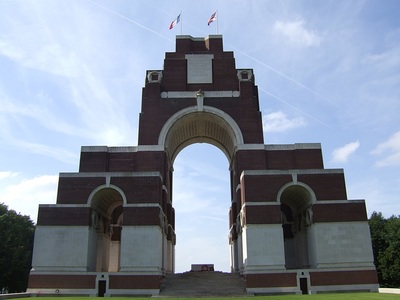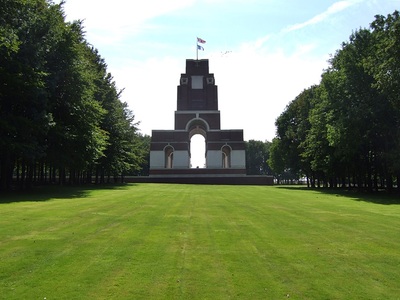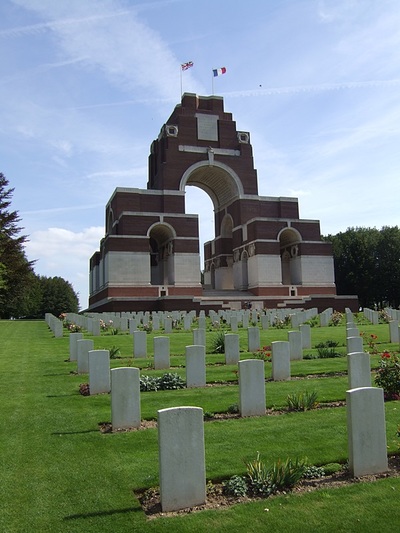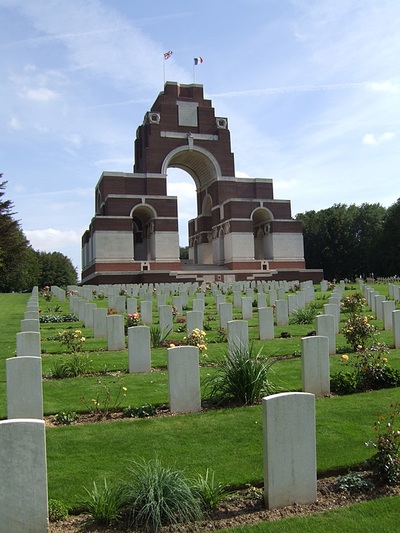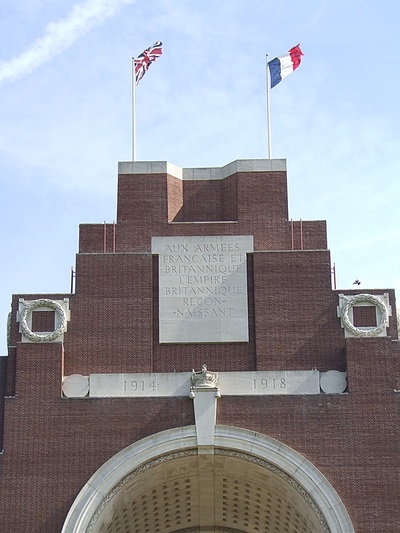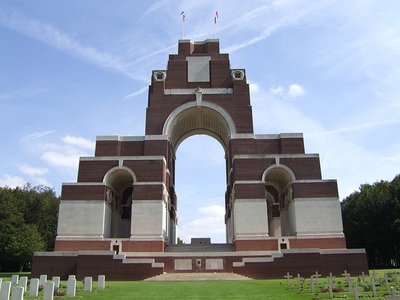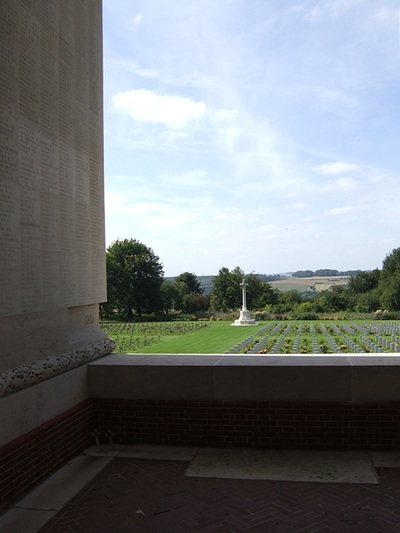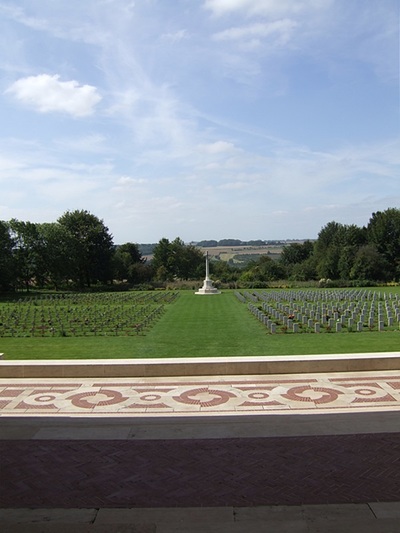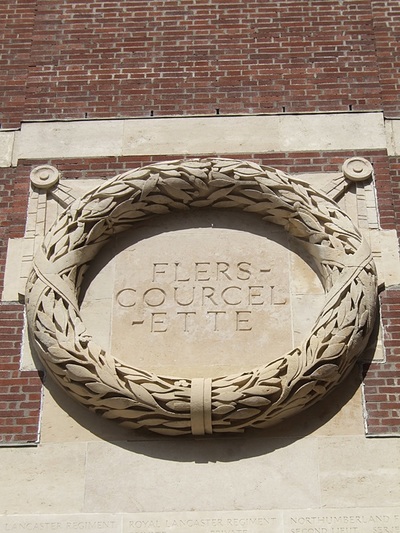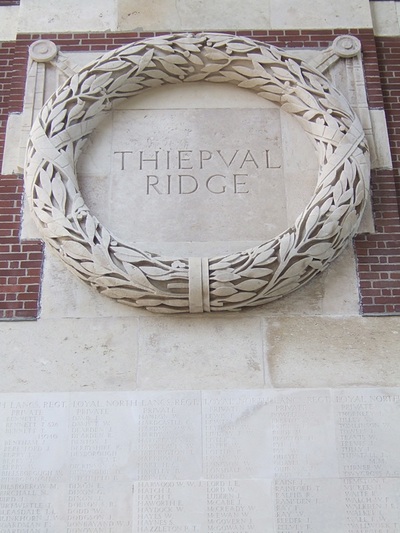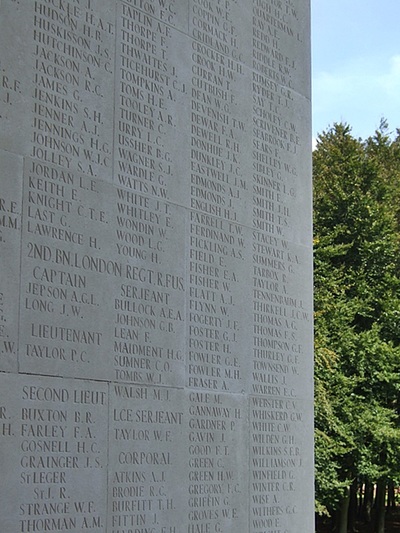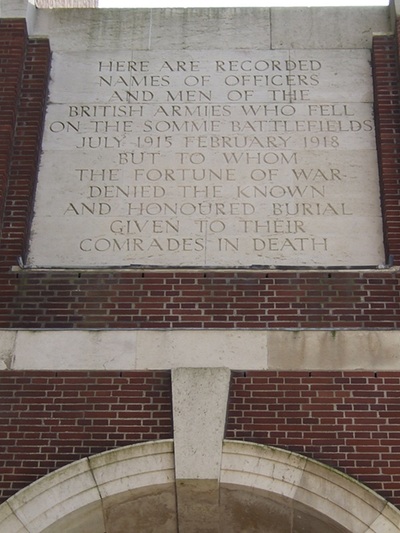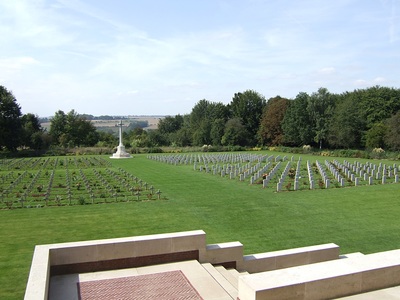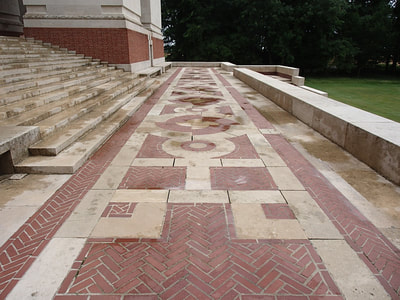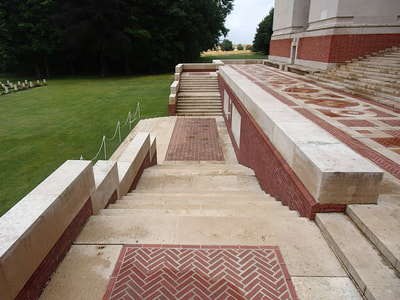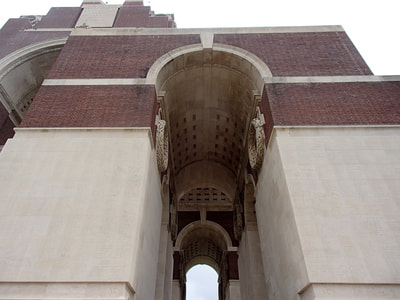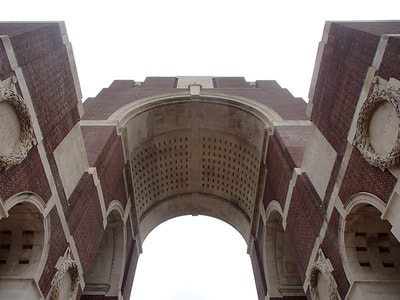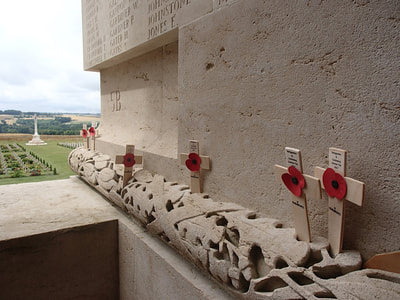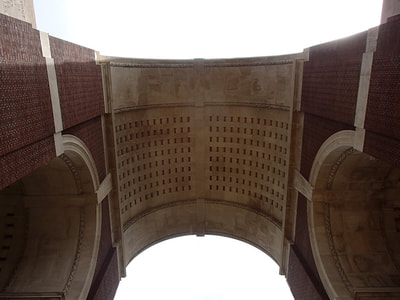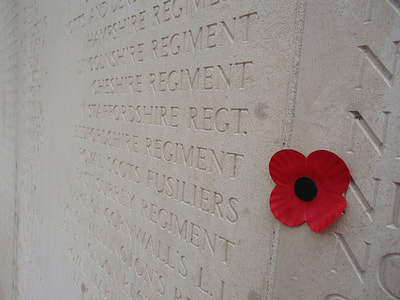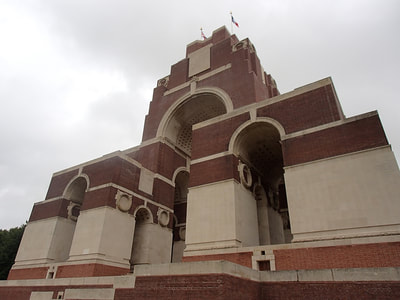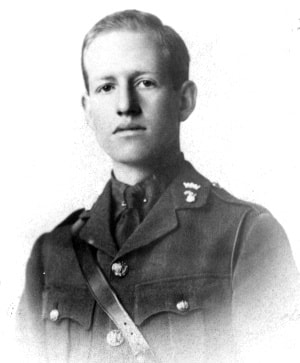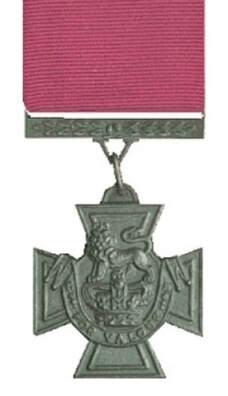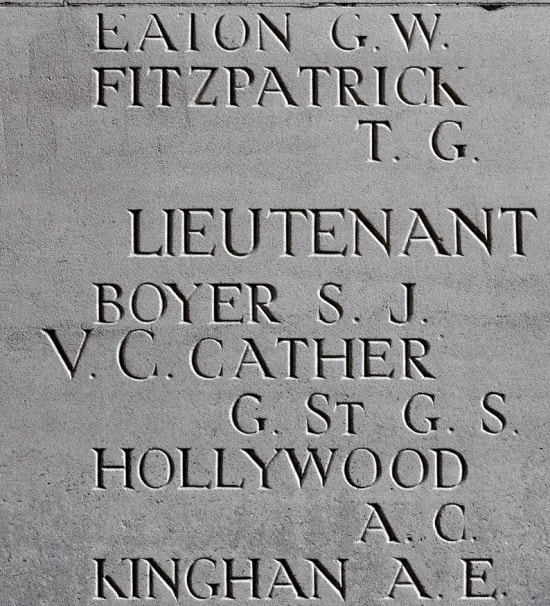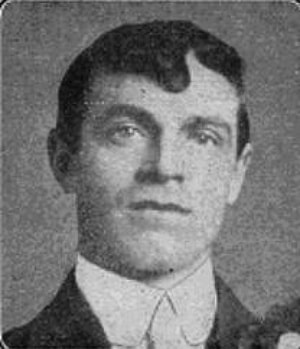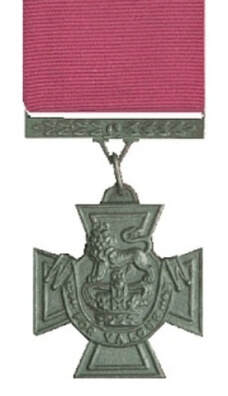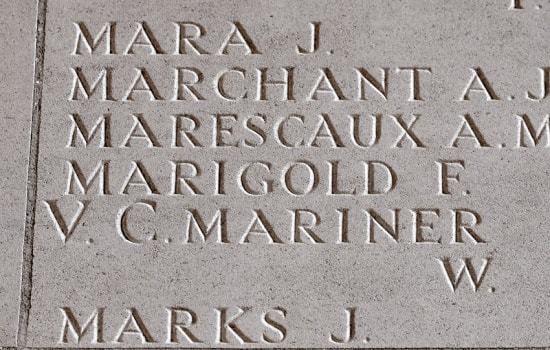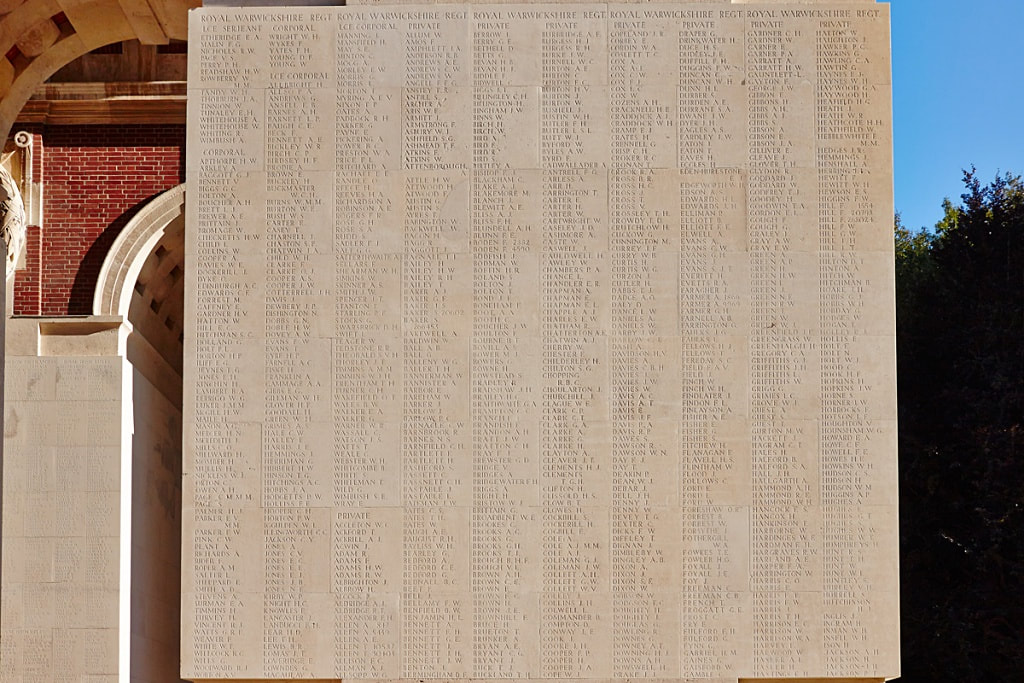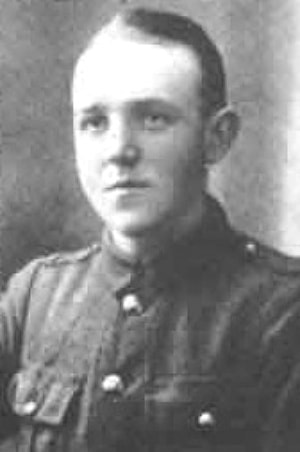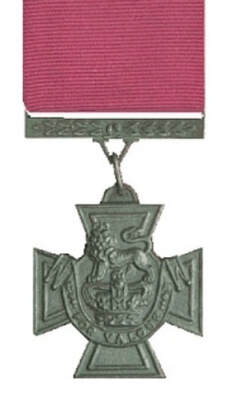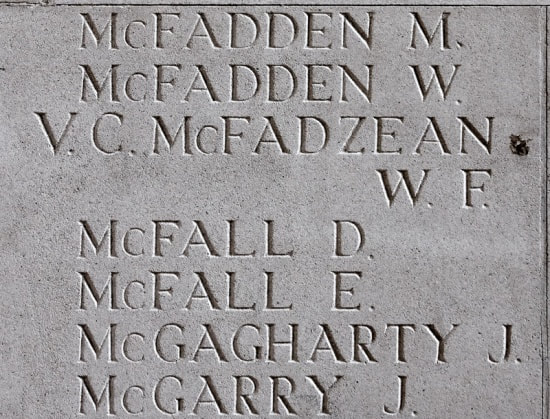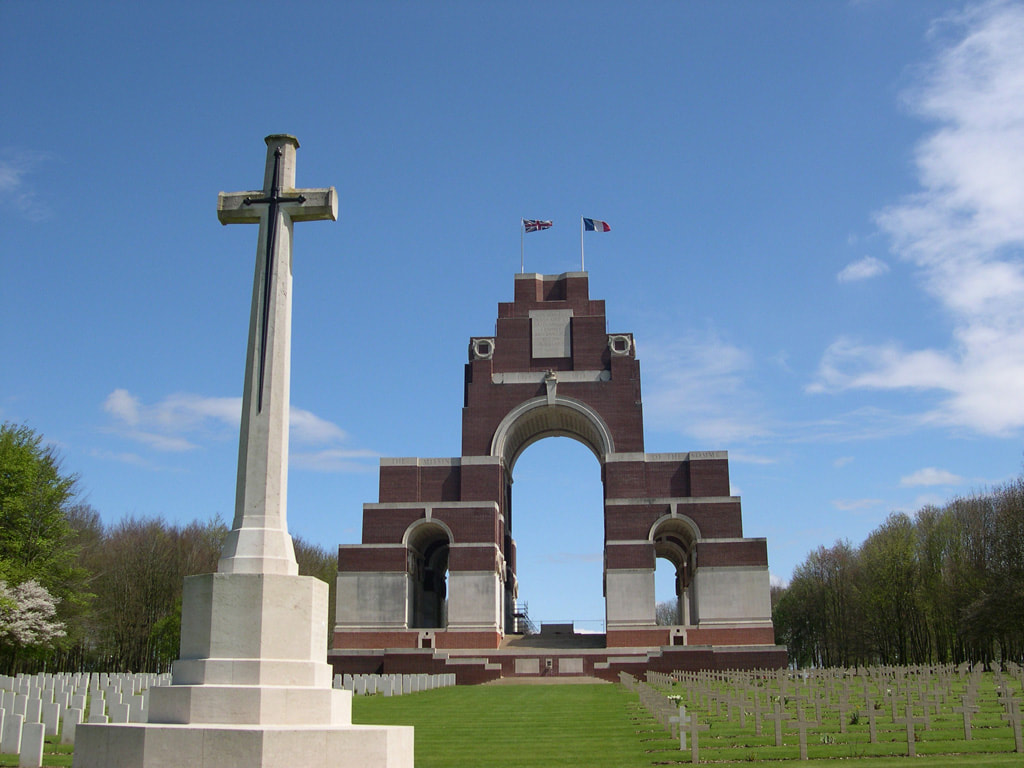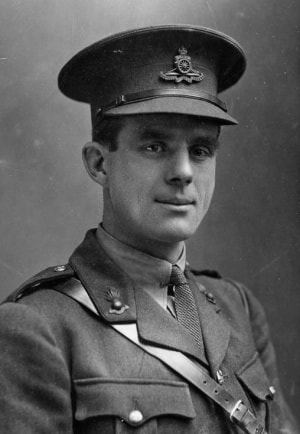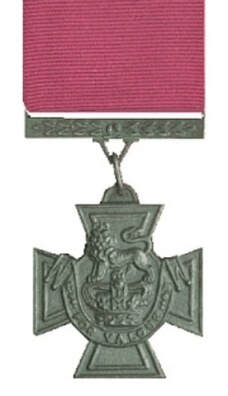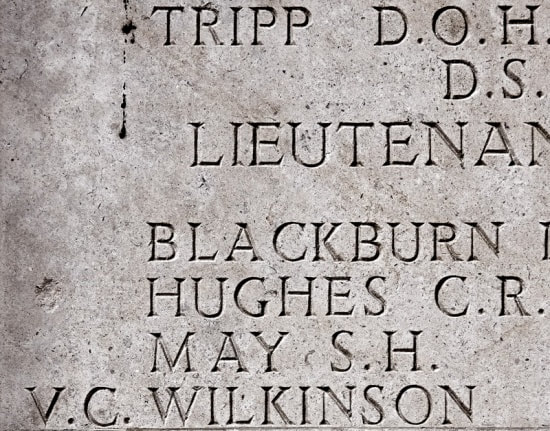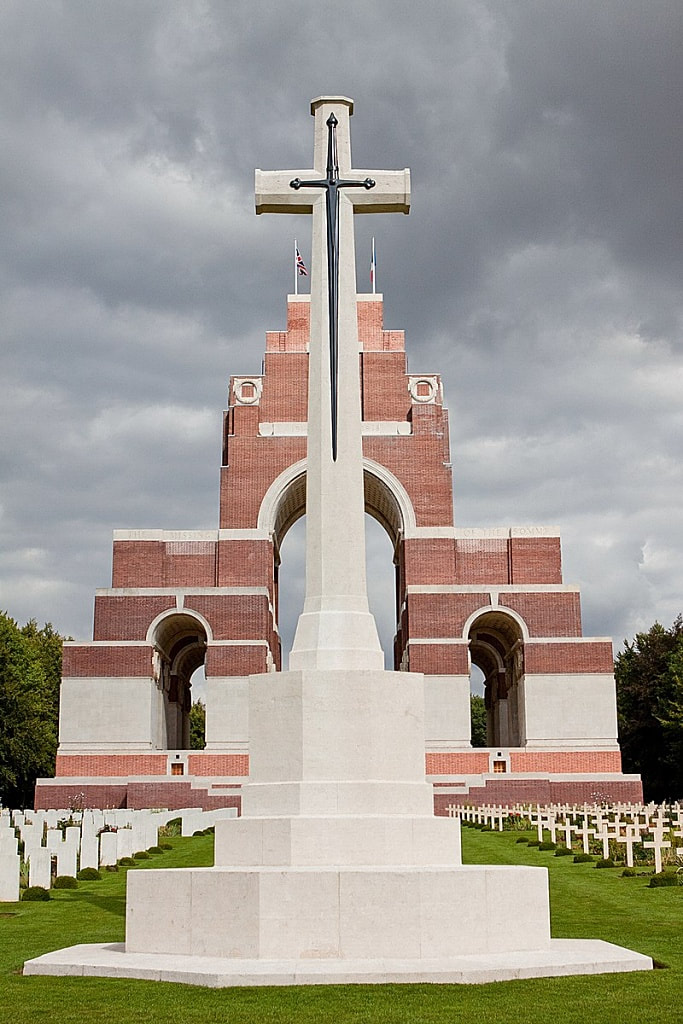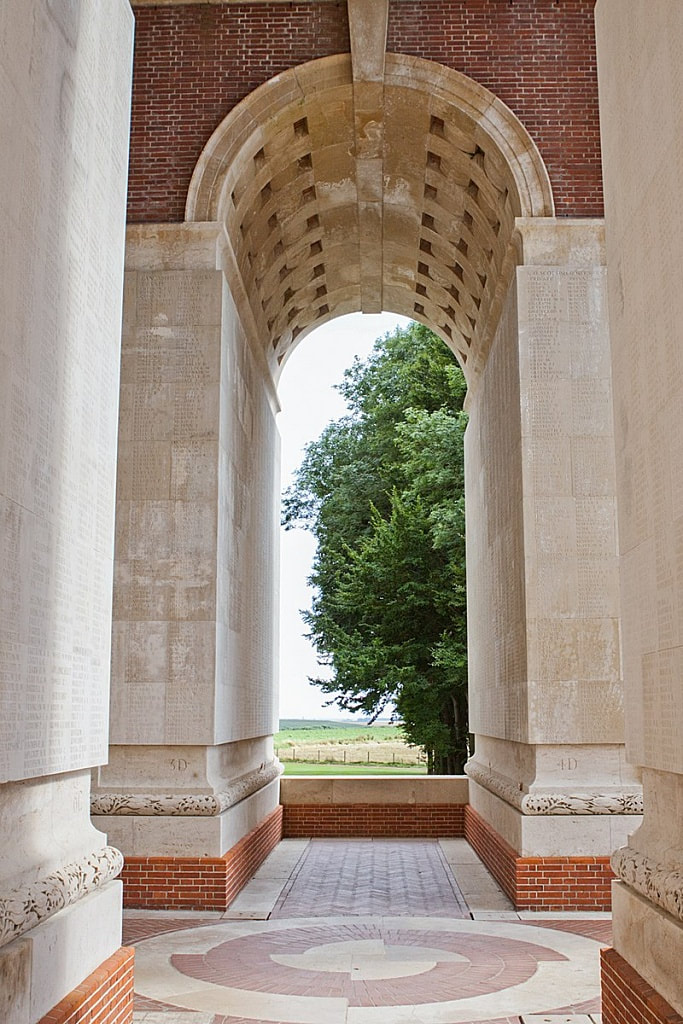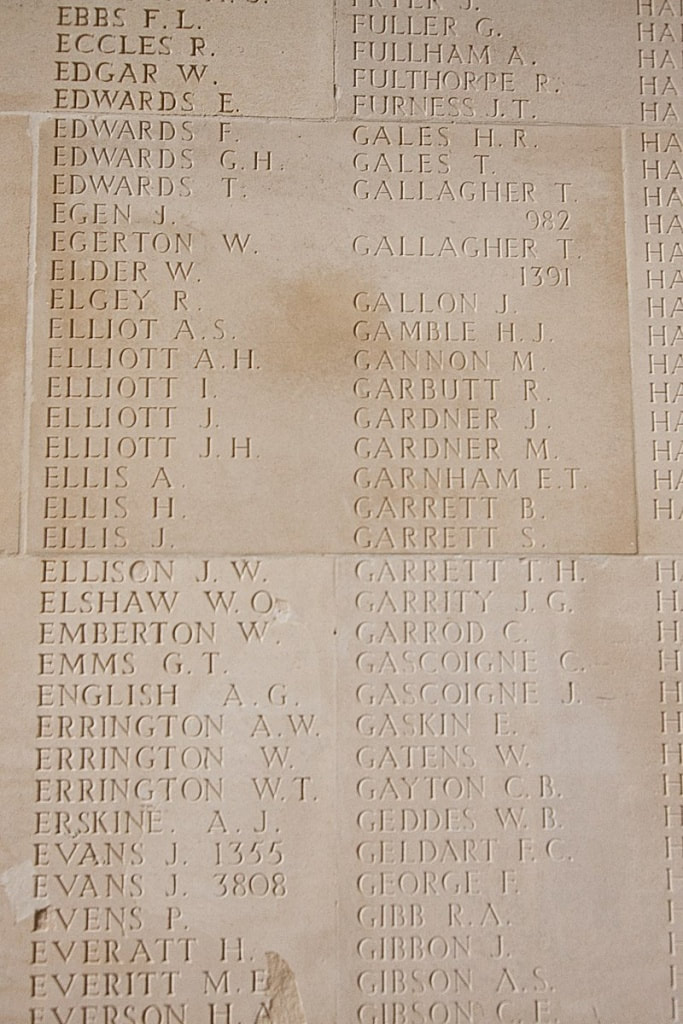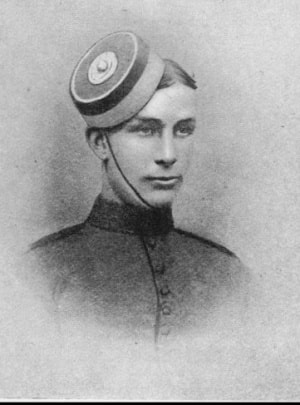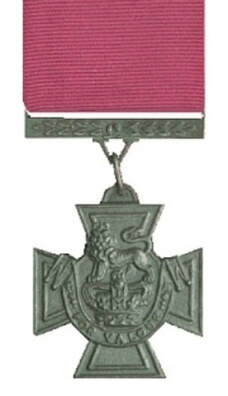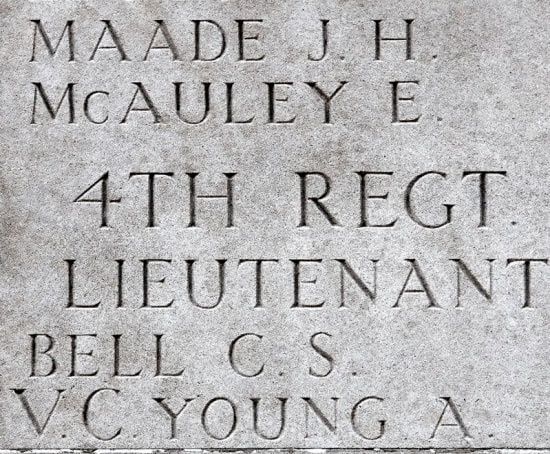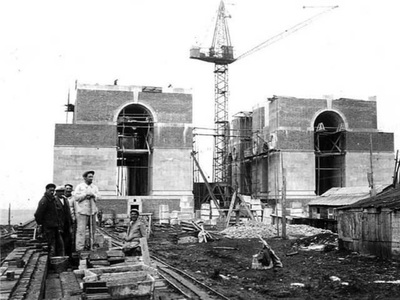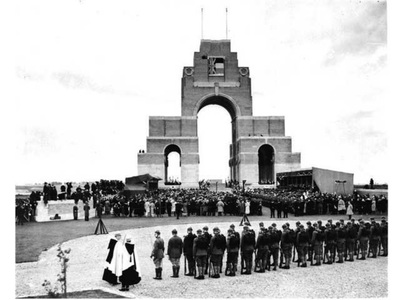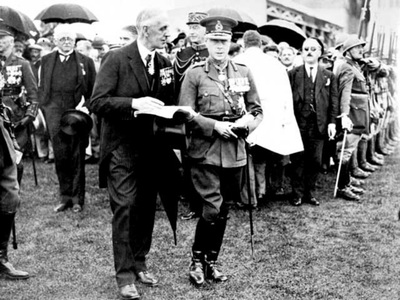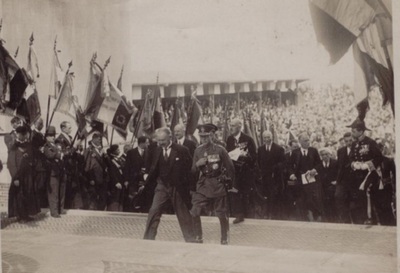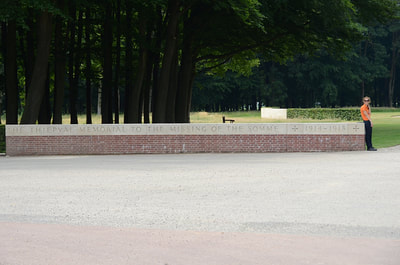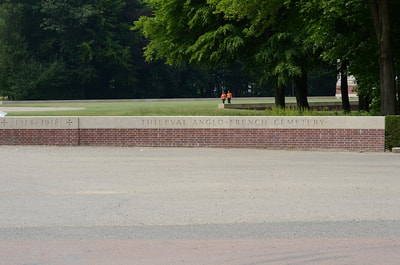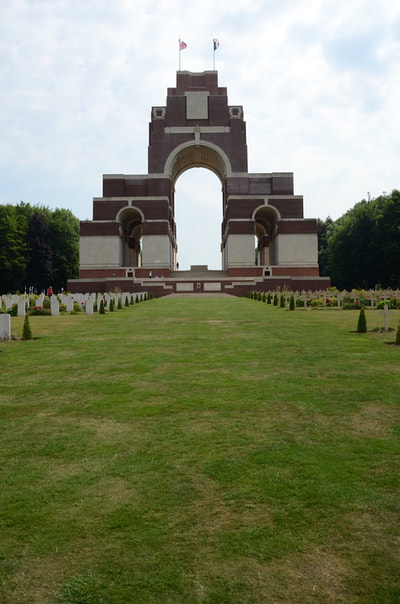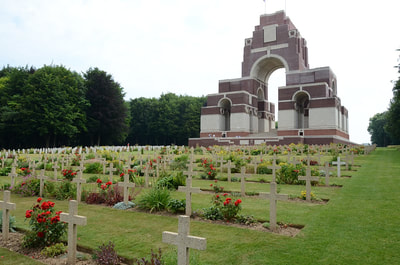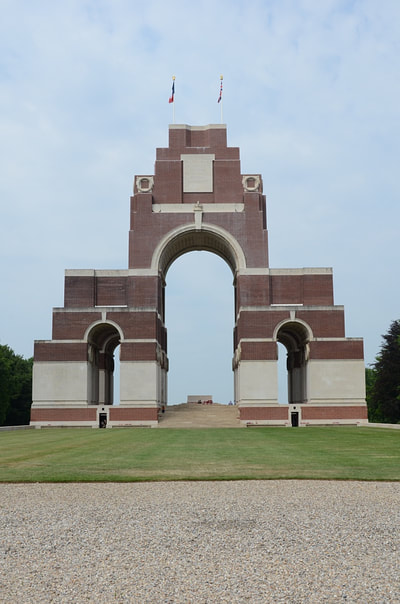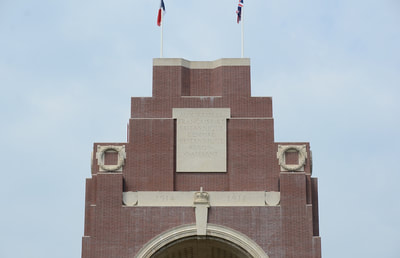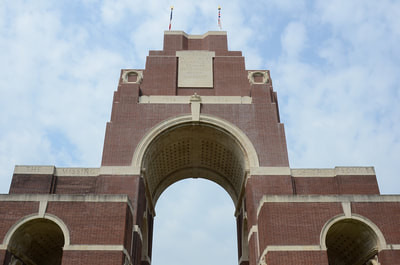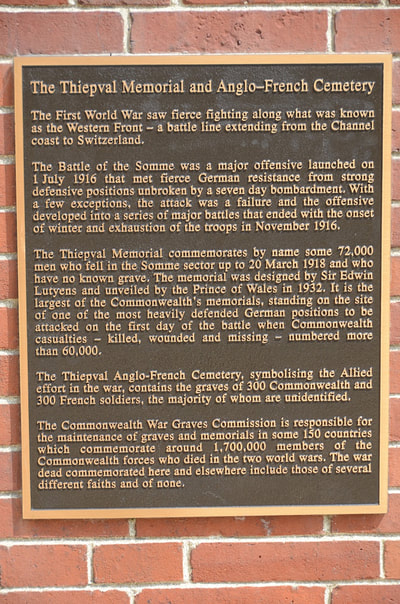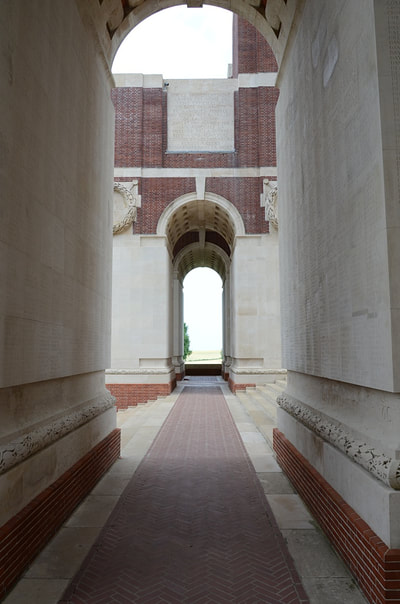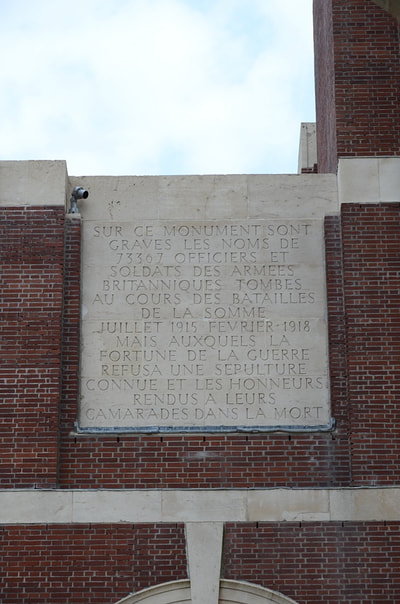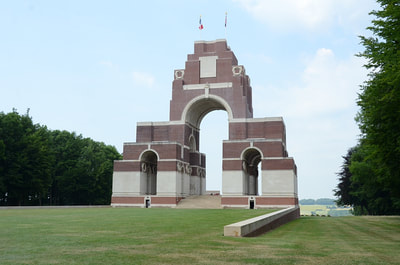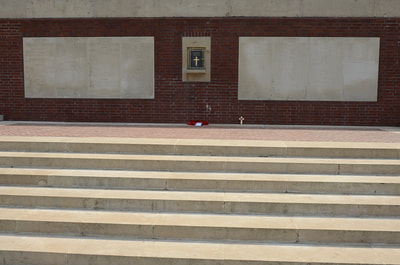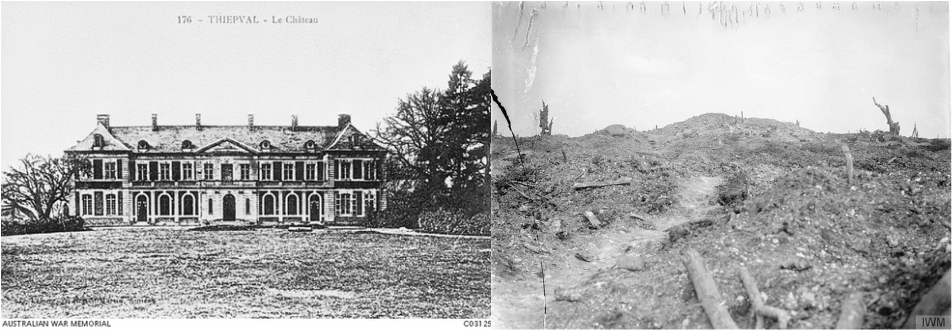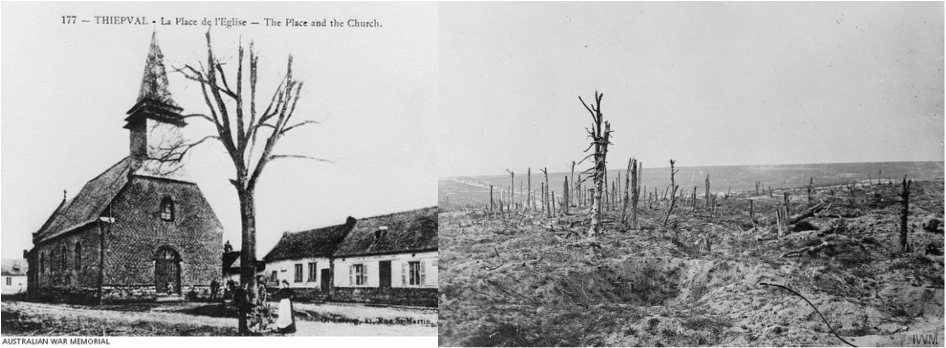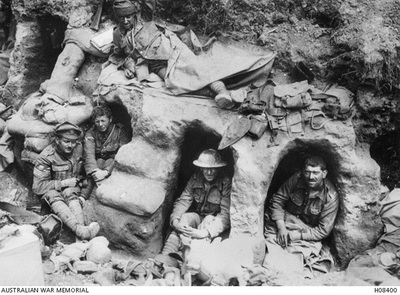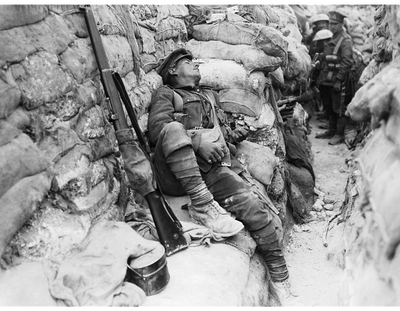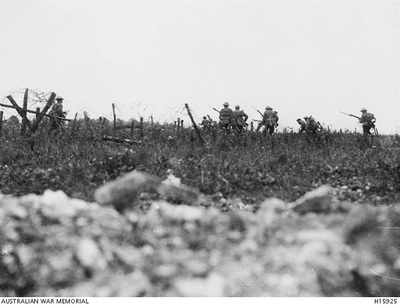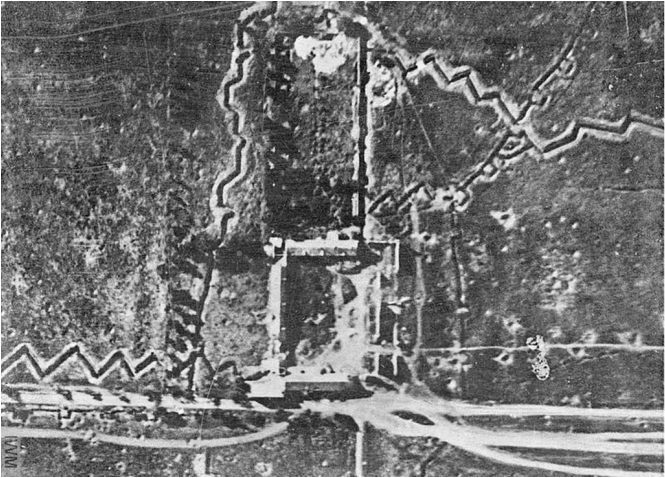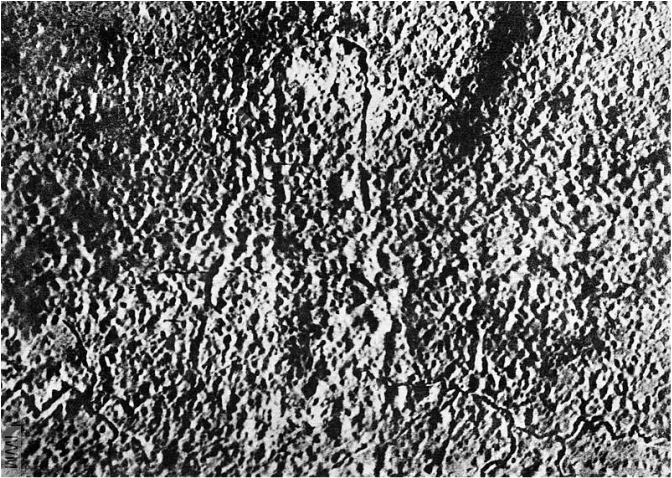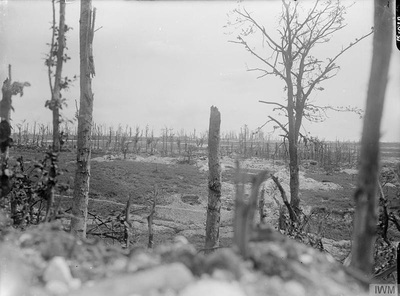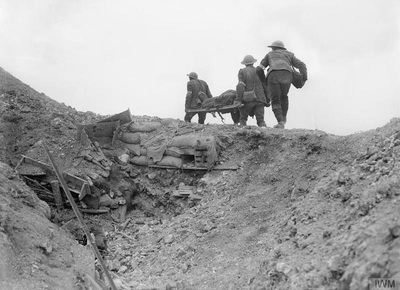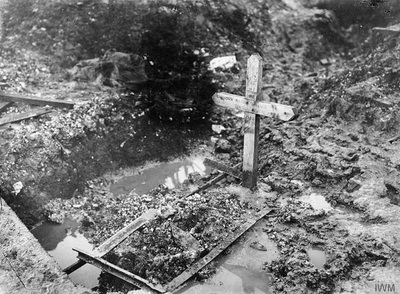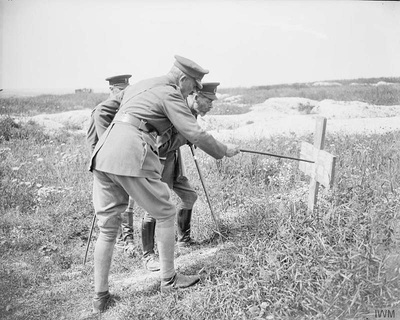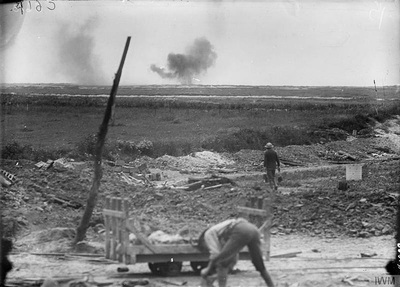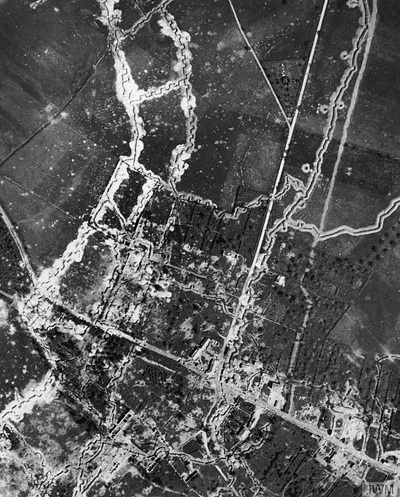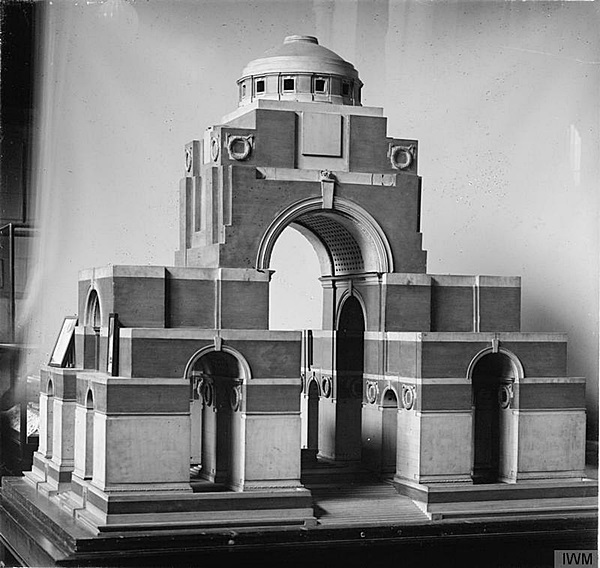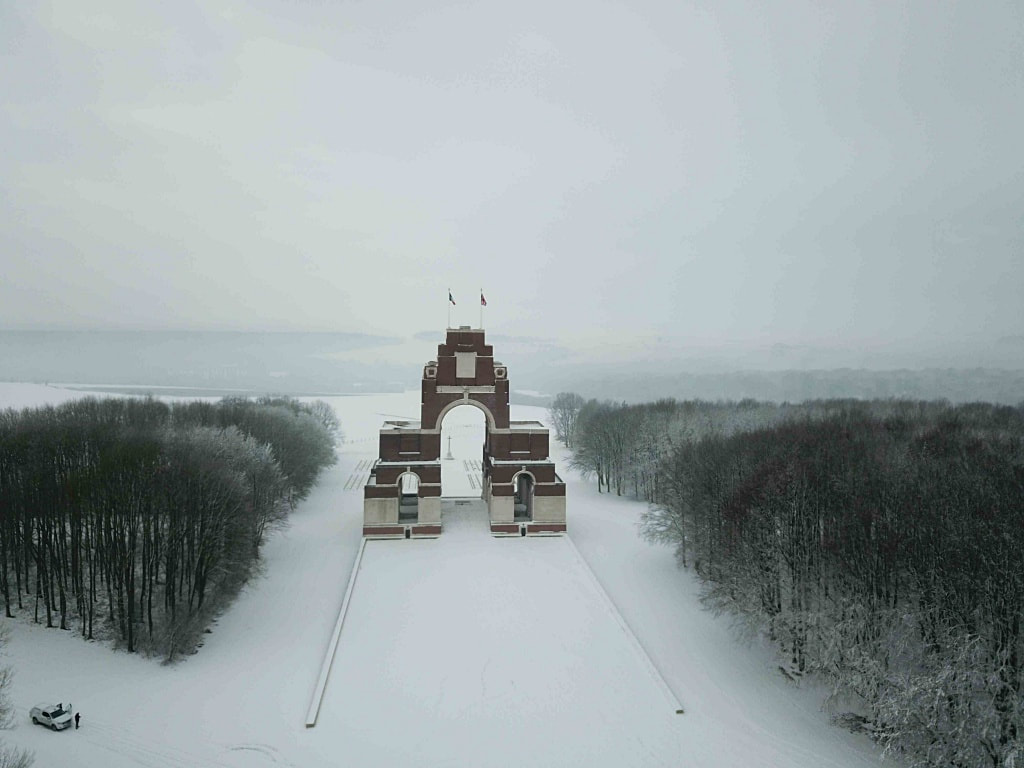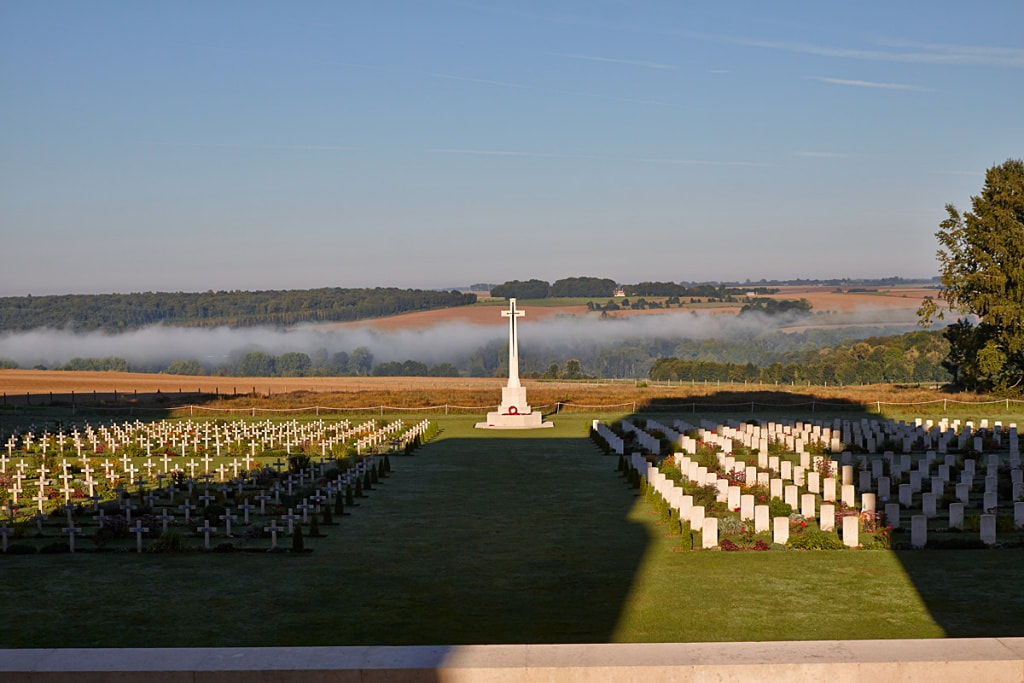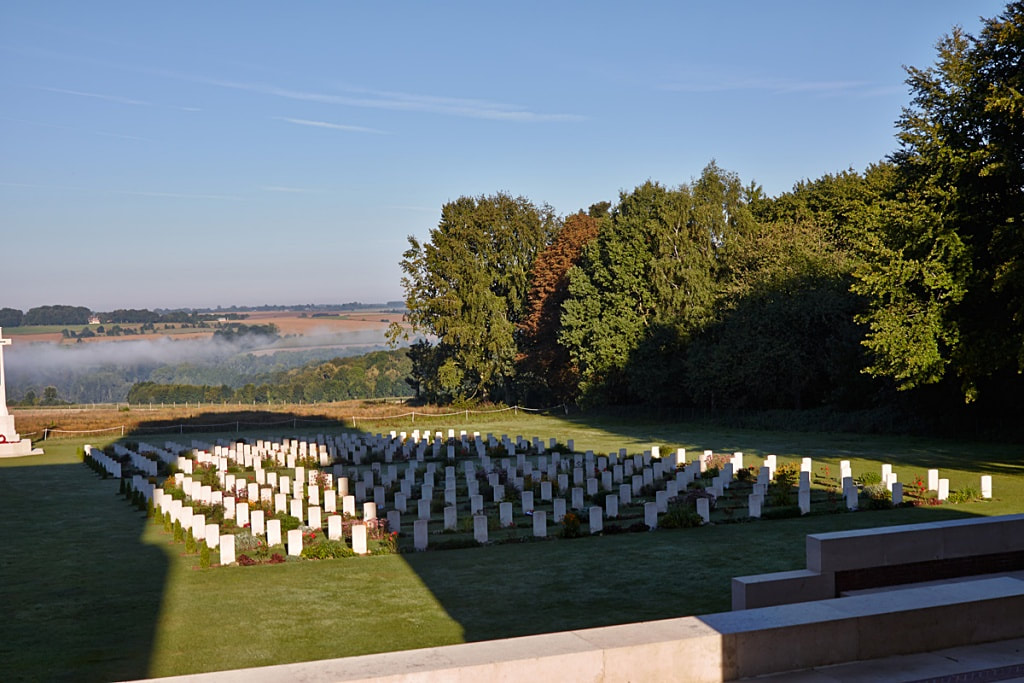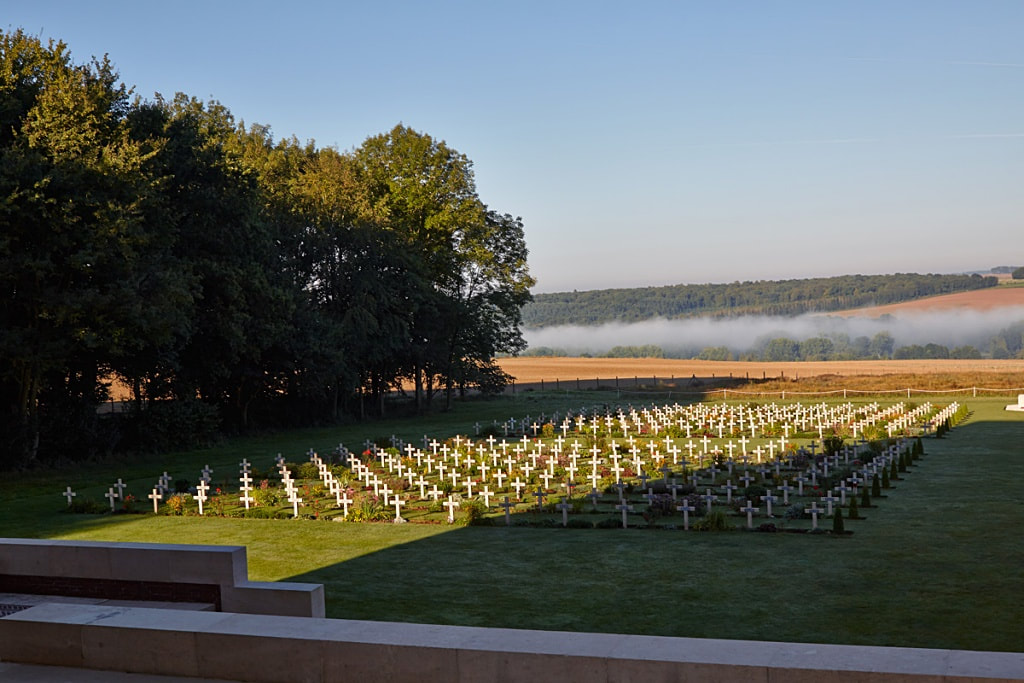THIEPVAL MEMORIAL TO THE MISSING
Somme
France
GPS Coordinates: Latitude: 50.05081, Longitude: 2.68569
Image above © Carl Liversage @carl_liversage
Roll of Honour
Listed by Surname
Location Information
The Thiepval Memorial will be found on the D73, next to the village of Thiepval, off the main Bapaume to Albert road (D929).
Each year a major ceremony is held at the memorial on 1 July.
Visiting Information
The Panel numbers (or Pier and Face) quoted at the end of each entry relate to the panels dedicated to the Regiment served with. In some instances where a casualty is recorded as attached to another Regiment, his name may alternatively appear within their Regimental Panel (or Pier and Face). Please refer to the on-site Memorial Register Introduction to determine the alternative panel numbers (or Pier and Face) if you do not find the name within the quoted Panels (or Pier and Face).
Visitors should also note that the location and design of this site makes access for people with limited mobility difficult and people using wheelchairs or mobility scooters may require some help to reach the memorial and the cemetery.
Historical Information
On 1 July 1916, supported by a French attack to the south, thirteen divisions of Commonwealth forces launched an offensive on a line from north of Gommecourt to Maricourt. Despite a preliminary bombardment lasting seven days, the German defences were barely touched and the attack met unexpectedly fierce resistance. Losses were catastrophic and with only minimal advances on the southern flank, the initial attack was a failure. In the following weeks, huge resources of manpower and equipment were deployed in an attempt to exploit the modest successes of the first day. However, the German Army resisted tenaciously and repeated attacks and counter attacks meant a major battle for every village, copse and farmhouse gained. At the end of September, Thiepval was finally captured. The village had been an original objective of 1 July. Attacks north and east continued throughout October and into November in increasingly difficult weather conditions. The Battle of the Somme finally ended on 18 November with the onset of winter.
In the spring of 1917, the German forces fell back to their newly prepared defences, the Hindenburg Line, and there were no further significant engagements in the Somme sector until the Germans mounted their major offensive in March 1918.
The Thiepval Memorial, the Memorial to the Missing of the Somme, bears the names of 72,173 officers and men of the United Kingdom and South African forces who died in the Somme sector before 20 March 1918 and have no known grave. Over 90% of those commemorated died between July and November 1916. The memorial also serves as an Anglo-French Battle Memorial in recognition of the joint nature of the 1916 offensive and a small cemetery containing equal numbers of Commonwealth and French graves lies at the foot of the memorial.
The memorial, designed by Sir Edwin Lutyens, was built between 1928 and 1932 and unveiled by the Prince of Wales, in the presence of the President of France, on 1 August 1932 (originally scheduled for 16 May but due to the death of French President Doumer the ceremony was postponed until August).
The dead of other Commonwealth countries, who died on the Somme and have no known graves, are commemorated on national memorials elsewhere.
Commemorated on Memorial: United Kingdom 71,341, South Africa 832. Total 72,173
The Thiepval Memorial will be found on the D73, next to the village of Thiepval, off the main Bapaume to Albert road (D929).
Each year a major ceremony is held at the memorial on 1 July.
Visiting Information
The Panel numbers (or Pier and Face) quoted at the end of each entry relate to the panels dedicated to the Regiment served with. In some instances where a casualty is recorded as attached to another Regiment, his name may alternatively appear within their Regimental Panel (or Pier and Face). Please refer to the on-site Memorial Register Introduction to determine the alternative panel numbers (or Pier and Face) if you do not find the name within the quoted Panels (or Pier and Face).
Visitors should also note that the location and design of this site makes access for people with limited mobility difficult and people using wheelchairs or mobility scooters may require some help to reach the memorial and the cemetery.
Historical Information
On 1 July 1916, supported by a French attack to the south, thirteen divisions of Commonwealth forces launched an offensive on a line from north of Gommecourt to Maricourt. Despite a preliminary bombardment lasting seven days, the German defences were barely touched and the attack met unexpectedly fierce resistance. Losses were catastrophic and with only minimal advances on the southern flank, the initial attack was a failure. In the following weeks, huge resources of manpower and equipment were deployed in an attempt to exploit the modest successes of the first day. However, the German Army resisted tenaciously and repeated attacks and counter attacks meant a major battle for every village, copse and farmhouse gained. At the end of September, Thiepval was finally captured. The village had been an original objective of 1 July. Attacks north and east continued throughout October and into November in increasingly difficult weather conditions. The Battle of the Somme finally ended on 18 November with the onset of winter.
In the spring of 1917, the German forces fell back to their newly prepared defences, the Hindenburg Line, and there were no further significant engagements in the Somme sector until the Germans mounted their major offensive in March 1918.
The Thiepval Memorial, the Memorial to the Missing of the Somme, bears the names of 72,173 officers and men of the United Kingdom and South African forces who died in the Somme sector before 20 March 1918 and have no known grave. Over 90% of those commemorated died between July and November 1916. The memorial also serves as an Anglo-French Battle Memorial in recognition of the joint nature of the 1916 offensive and a small cemetery containing equal numbers of Commonwealth and French graves lies at the foot of the memorial.
The memorial, designed by Sir Edwin Lutyens, was built between 1928 and 1932 and unveiled by the Prince of Wales, in the presence of the President of France, on 1 August 1932 (originally scheduled for 16 May but due to the death of French President Doumer the ceremony was postponed until August).
The dead of other Commonwealth countries, who died on the Somme and have no known graves, are commemorated on national memorials elsewhere.
Commemorated on Memorial: United Kingdom 71,341, South Africa 832. Total 72,173
Thiepval Memorial
Captain Eric Norman Frankland Bell V. C.
9th Bn. Royal Inniskilling Fusiliers and 109th Trench Mortar Battery
1st July 1916, aged 20.
Panel Reference Pier and Face 4 D and 5 B.
Son of Capt. E. H. Bell, of 22, University Rd., Bootle, Liverpool. Native of Enniskillen, Ireland.
Citation:
An extract from "The London Gazette", dated 26th Sept., 1916, records the following: "For most conspicuous bravery. He was in command of a Trench Mortar Battery, and advanced with the Infantry in the attack. When our front line was hung up by enfilading machine gun fire Captain Bell crept forward and shot the machine gunner. Later, on no less than three occasions, when our bombing parties, which were clearing the enemy's trenches, were unable to advance, he went forward alone and threw Trench Mortar bombs among the enemy. When he had no more bombs available he stood on the parapet, under intense fire, and used a rifle with great coolness and effect on the enemy advancing to counter-attack. Finally he was killed rallying and reorganising infantry parties which had lost their officers. All this was outside the scope of his normal duties with his battery. He gave his life in his supreme devotion to duty."
6276 Private William Buckingham V. C.
1st Bn. Leicestershire Regiment
15th September 1916, aged 29.
Panel Reference Pier and Face 2 C and 3 A.
Son of Mrs. A. Buckingham, of 35, York St., Bedford.
Citation:
An extract from "The London Gazette" dated 28th April, 1915, records the following:-"For conspicuous acts of bravery and devotion to duty in rescuing and rendering aid to the wounded whilst exposed to heavy fire, especially at Neuve-Chapelle on 10th and 12th March 1915.
Lieutenant Geoffrey St. George Shillington Cather V. C.
Adjutant 9th Bn. Royal Irish Fusiliers
2nd July 1916, aged 25.
Panel Reference Pier and Face 15 A.
Son of the late Mr. R. G. Cather and of Mrs. M. M. Cather, of Limpsfield, Surrey.
Citation:
An extract from "The London Gazette," dated 8th Sept., 1916, records the following: "For most conspicuous bravery. From 7 p.m. till midnight he searched 'No Man's Land', and brought in three wounded men. Next morning at 8 a.m. he continued his search, brought in another wounded man, and gave water to others, arranging for their rescue later. Finally, at 10.30 a.m., he took out water to another man, and was proceeding further on when he was himself killed. All this was carried out in full view of the enemy, and under direct machine gun fire and intermittent artillery fire. He set a splendid example of courage and self sacrifice".
A/2052 Rifleman William Mariner V. C.
2nd Bn. "B" Company, King's Rifle Corps
1st July 1916, aged 34.
Panel Reference Pier and Face 13 A and 13 B.
Son of Mrs. Alice Wignall, of 18, Fletcher St., Lower Broughton, Manchester.
Citation:
An extract from "The London Gazette" dated 23rd June, 1915, records the following:-"During a violent thunderstorm on the night of 22nd May, 1915, he left his trench near Cambrin, and crept out through the German wire entanglements till he reached the emplacement of a German machine gun which had been damaging our parapets and hindering our working parties. After climbing on the top of the German parapet he threw a bomb in under the roof of the gun emplacement and heard some groaning and the enemy running away. After about a quarter of an hour he heard some of them coming back again, and climbed up on the other side of the emplacement and threw another bomb among them left-handed. He then lay still while the Germans opened a heavy fire on the wire entanglement behind him, and it was only after about an hour that he was able to crawl back to his own trench. Before starting out he had requested a serjeant to open fire on the enemy's trenches as soon as he had thrown his bombs. Rifleman Mariner was out alone for one and half hours carrying out this gallant work".
18278 Rifleman William Frederick McFadzean V. C.
14th Bn. "C" Company Royal Irish Rifles
1st July 1916, aged 20.
Panel Reference Pier and Face 15 A and 15 B.
Son of William and Annie Pedlow McFadzean, of Rubicon, Cregagh, Belfast.
Citation:
An extract from the London Gazette, dated 8th Sept., 1916, records the following:-"For most conspicuous bravery. While in a concentration trench and opening a box of bombs for distribution prior to an attack, the box slipped down into the trench, which was crowded with men, and two of the safety pins fell out. Private McFadzean, instantly realising the danger to his comrades, with heroic courage threw himself on the top of the bombs. The bombs exploded blowing him to pieces, but only one other man was injured. He well knew his danger, being himself a bomber, but without a moment's hesitation he gave his life for his comrades."
Lieutenant Thomas Orde Lawder Wilkinson V. C.
7th Bn. The Loyal North Lancashire Regiment
5th July 1916, aged 22.
Panel Reference Pier and Face 11 A.
Son of Charles Orde Wilkinson and Edith Wilkinson, of Ardanoir, Foynes, Co. Limerick.
Citation:
An extract from the London Gazette, dated 26th Sept., 1916, records the following:-"For most conspicuous bravery. During an attack, when a party of another unit was retiring without their machine-gun, Lieut. Wilkinson rushed forward, and, with two of his men, got the gun into action, and held up the enemy till they were relieved. Later, when the advance was checked during a bombing attack, he forced his way forward and found four or five men of different units stopped by a solid block of earth, over which the enemy was throwing bombs. With great pluck and promptness he mounted a machine-gun on the top of the parapet and dispersed the enemy bombers. Subsequently he made two most gallant attempts to bring in a wounded man, but at the second attempt he was shot through the heart just before reaching the man. Throughout the day he set a magnificent example of courage and self-sacrifice.
Lieutenant Alexander Young (V. C. awarded during the Boer War)
South African Infantry, 4th Regiment
19th October 1916, aged 44.
Panel Reference Pier and Face 4 C.
Son of the late William Young, of Ballinamana, Co. Galway.
Citation:
An extract taken from the London Gazette dated 8th November, 1901 records the following; "Towards the close of the action at Ruiter's Kraal (South African War). on the 13th August, 1901, Sergeant-Major Young, with a handful of men, rushed some kopjes which were being held by the Boers. Sergeant Major Young then galloped on some 50 yards ahead of his party and closing with the enemy shot one of them and captured Commandant Erasmus, the latter firing at him three times at point blank range before being taken prisoner."
Shot at Dawn
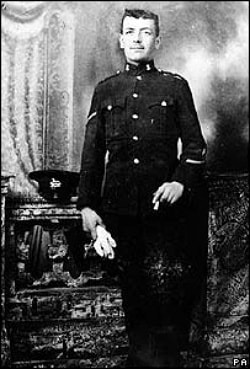
8871 Private
Harry Thomas Farr
1st Bn. West Yorkshire Regiment (Prince of Wales's Own)
executed for cowardice on 18th October 1916.
Pier and Face 2 A 2 C and 2 D.
Husband of Gertrude Lydia Farr, of 20, Church Road, Hampstead, London.
He enlisted in 1908, arrived in France in Sept 1914, & was probably involved in the fighting at Neuve Chapelle in March 1915.
In May 1915, he was evacuated to Boulogne with shell-shock such that he could not hold a pen. Thereafter he served continuously with the battalion from Oct 1915 until 18 Sept when his nerves gave way.
His battalion was in the front line opposite the Quadrilateral, when on the morning of 17 Sept Farr reported sick at the dressing-station (having fallen out the night before), but the MO refused to examine him since he was not wounded. Thereafter he was ordered to join a ration party that evening, but by 2300 he had not moved from the transport line, saying: ‘I cannot stand it’. Farr was told that he would have to go to the trenches that night, but refused & a QMS was detailed to take him there under escort. After a short distance, Farr started to struggle & screamed. When bluntly advised that he could be tried for Cowardice, Farr said that he was not fit to go to the trenches; & even refused to be taken to see the MO. He was allowed back to the transport line, where he was put under guard.
At trial, Farr gave evidence, not disputing in substance what had gone on; & stating that he would have gone forward if his escort had not started to shove him about.
The battalion MO, as was the usual practice, saw the accused on Oct 2 (the day of trial), certifying him fit for the strain of trial (but would not have examined him further). When Farr was asked by the court if he could have reported sick between Sept 16 & Oct 2, Farr agreed but said that he had not taken up the opportunity given because: ‘being away from the shell fire I felt better’.
A defence witness stated that Farr had reported sick with nerves about Apr 1916 & that the MO had kept Farr at the dressing-station for a fortnight. He had reported sick for the same reason on 22 July, but was discharged the next day.
Upon conviction, character evidence from an officer showed that Farr had 3 times in the previous 6 weeks asked to fall out from working parties as he could not stand the noise of artillery. ‘He was trembling & did not appear in a fit state’.
Farr’s CO said that his conduct & character in general was very good, but that on many occasions he had proved himself incapable of keeping his head in action & was likely to cause panic.
Brigade, Divisional & Corps commanders all recommended execution, the Corps commander adding that he had been informed that ‘the man is no good’. (Corns, pp. 202-205 212, 214)
Harry Thomas Farr
1st Bn. West Yorkshire Regiment (Prince of Wales's Own)
executed for cowardice on 18th October 1916.
Pier and Face 2 A 2 C and 2 D.
Husband of Gertrude Lydia Farr, of 20, Church Road, Hampstead, London.
He enlisted in 1908, arrived in France in Sept 1914, & was probably involved in the fighting at Neuve Chapelle in March 1915.
In May 1915, he was evacuated to Boulogne with shell-shock such that he could not hold a pen. Thereafter he served continuously with the battalion from Oct 1915 until 18 Sept when his nerves gave way.
His battalion was in the front line opposite the Quadrilateral, when on the morning of 17 Sept Farr reported sick at the dressing-station (having fallen out the night before), but the MO refused to examine him since he was not wounded. Thereafter he was ordered to join a ration party that evening, but by 2300 he had not moved from the transport line, saying: ‘I cannot stand it’. Farr was told that he would have to go to the trenches that night, but refused & a QMS was detailed to take him there under escort. After a short distance, Farr started to struggle & screamed. When bluntly advised that he could be tried for Cowardice, Farr said that he was not fit to go to the trenches; & even refused to be taken to see the MO. He was allowed back to the transport line, where he was put under guard.
At trial, Farr gave evidence, not disputing in substance what had gone on; & stating that he would have gone forward if his escort had not started to shove him about.
The battalion MO, as was the usual practice, saw the accused on Oct 2 (the day of trial), certifying him fit for the strain of trial (but would not have examined him further). When Farr was asked by the court if he could have reported sick between Sept 16 & Oct 2, Farr agreed but said that he had not taken up the opportunity given because: ‘being away from the shell fire I felt better’.
A defence witness stated that Farr had reported sick with nerves about Apr 1916 & that the MO had kept Farr at the dressing-station for a fortnight. He had reported sick for the same reason on 22 July, but was discharged the next day.
Upon conviction, character evidence from an officer showed that Farr had 3 times in the previous 6 weeks asked to fall out from working parties as he could not stand the noise of artillery. ‘He was trembling & did not appear in a fit state’.
Farr’s CO said that his conduct & character in general was very good, but that on many occasions he had proved himself incapable of keeping his head in action & was likely to cause panic.
Brigade, Divisional & Corps commanders all recommended execution, the Corps commander adding that he had been informed that ‘the man is no good’. (Corns, pp. 202-205 212, 214)
40806 Private Peter Cairnie, 1st Bn. Royal Scots Fusiliers, executed for desertion on 28th December 1916. Pier and Face 3 C. (The only Cairnie on the Memorial is W. Cairnie and not P. Cairnie). He deserted in order to avoid taking part in a specific assault at Serre, a village which had been a battalion objective — in appalling conditions, with heavy casualties -- for over 3 months. (Putkowski, p.145)
S/9629 Private Charles Walter Skilton, 22nd Bn. Royal Fusiliers, executed for desertion on 26th December 1916, aged 20. Pier and Face 8 C 9 A and 16 A. Son of Mrs. Edith Skilton, of 24, Shirley Gardens, Hanwell. His battalion had been involved in the assault on Delville Wood on 27 July 1916, Skilton apparently shirking his duty. However,for lack of evidence, no disciplinary action resulted. In late October his battalion was still fighting in the area — heavy rain turning the ground into mud — & Skilton want missing again. At trial,he refused representation, & very damaging evidence was put in against him. A Major contended that given the availability of evidence about Delville Wood in July, Skilton would have been tried for Cowardice; & further added that Skilton shirked fatigues in the trenches,being lazy, unreliable & useless. (Putkowski,pp.144-145)
Images in gallery below © Johan Pauwels
The Chateau at Thiepval pre-war and as it looked on 28th September 1916
The village of Thiepval pre-war and as it looked on 30th June 1917
Image above © Carl Liversage @carl_liversage

